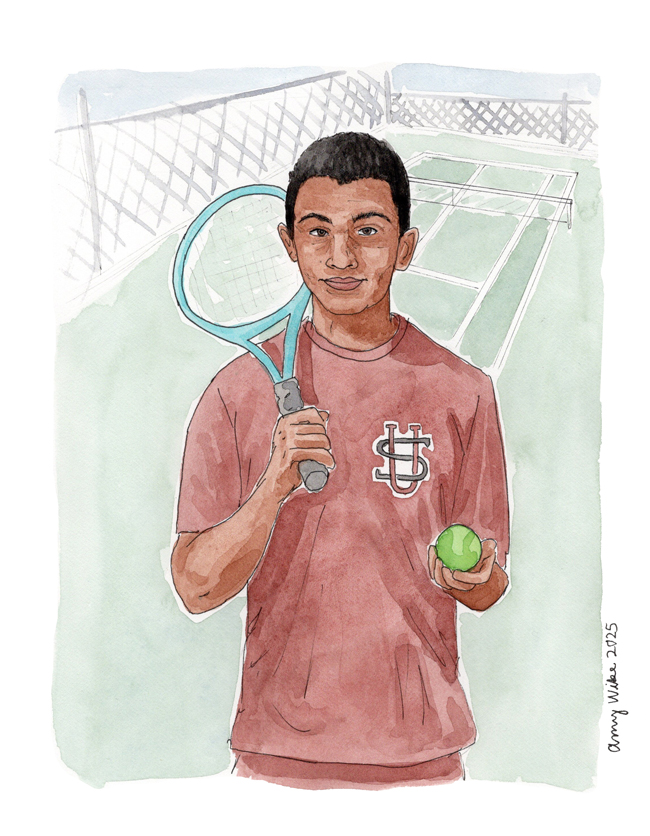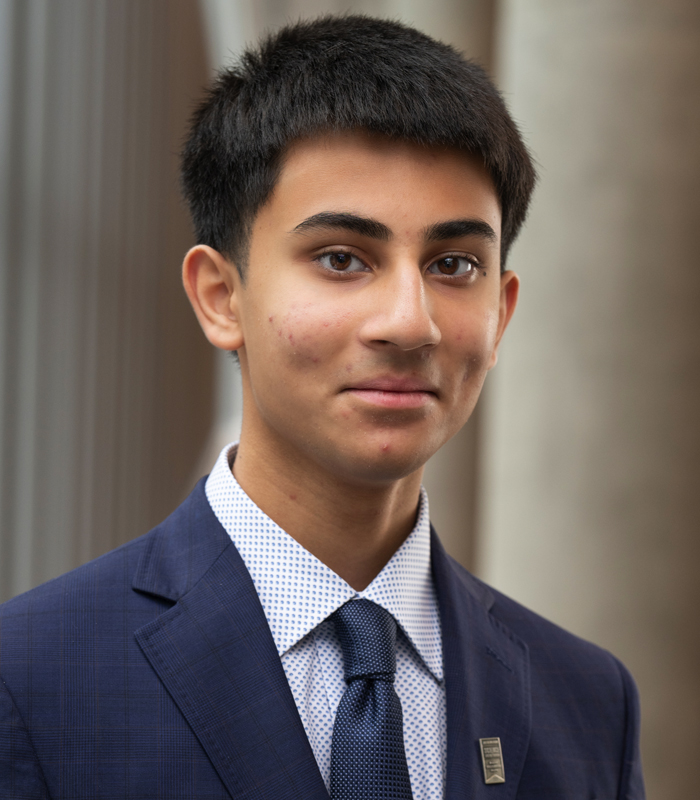Vishwum Kapadia
University School
Hunting Valley, Ohio
Dicrotic Notch Index After Transcatheter Edge-To-Edge Repair for Mitral Regurgitation
Vishwum studied how to improve the success of a heart valve repair procedure.
View Poster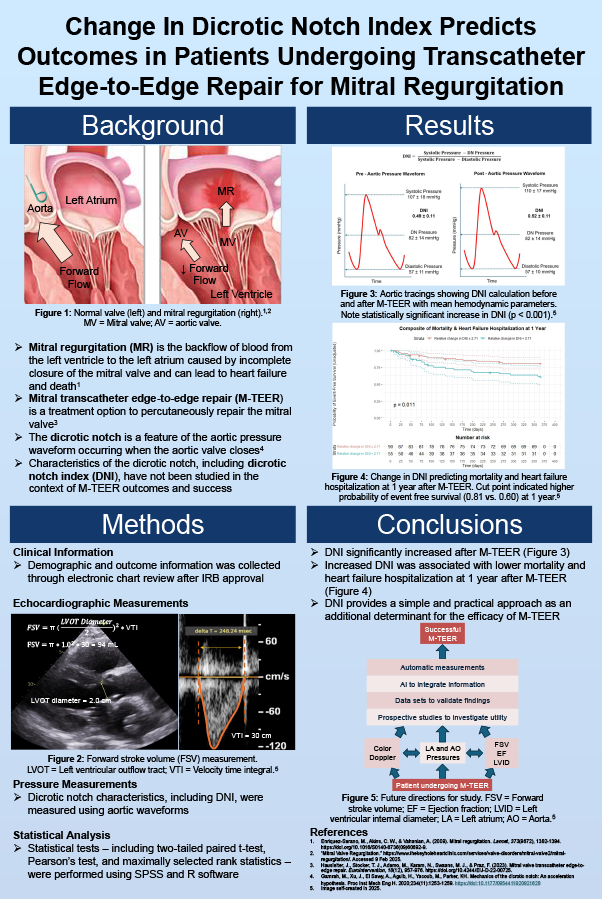
Vishwum Kapadia, 17, of Orange, studied how to improve the success of a heart valve repair procedure for his Regeneron Science Talent Search medicine and health project. Problems with the heart’s mitral valve can cause blood to leak backward. A procedure called mitral transcatheter edge-to-edge repair (M-TEER) can help. In M-TEER, doctors use a clip to fix the valve, but positioning the clip is a challenge.
In his project, Vishwum explored whether the dicrotic notch index (DNI), a measure of blood flow in the heart, is related to the success of M-TEER. In 145 patients who had M-TEER at Cleveland Clinic, Vishwum found that higher DNI was linked to procedure success. Patients with a DNI increase of at least 2.71% had fewer hospitalizations and deaths. He believes that DNI is a sign that clips are positioned correctly, and that tracking DNI during M-TEER procedures could help doctors. He published his findings in the Structural Heart journal.
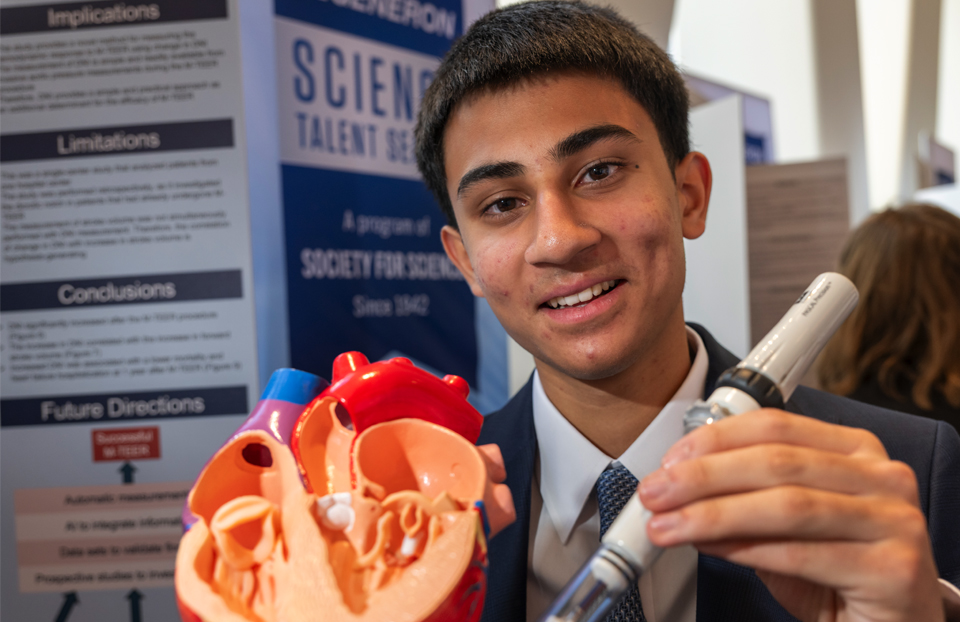
Vishwum, the child of Samir and Manasvee Kapadia, attends University School (Hunting Valley), where he is head prefect. He also co-leads the Spanish honor society and the varsity tennis team.
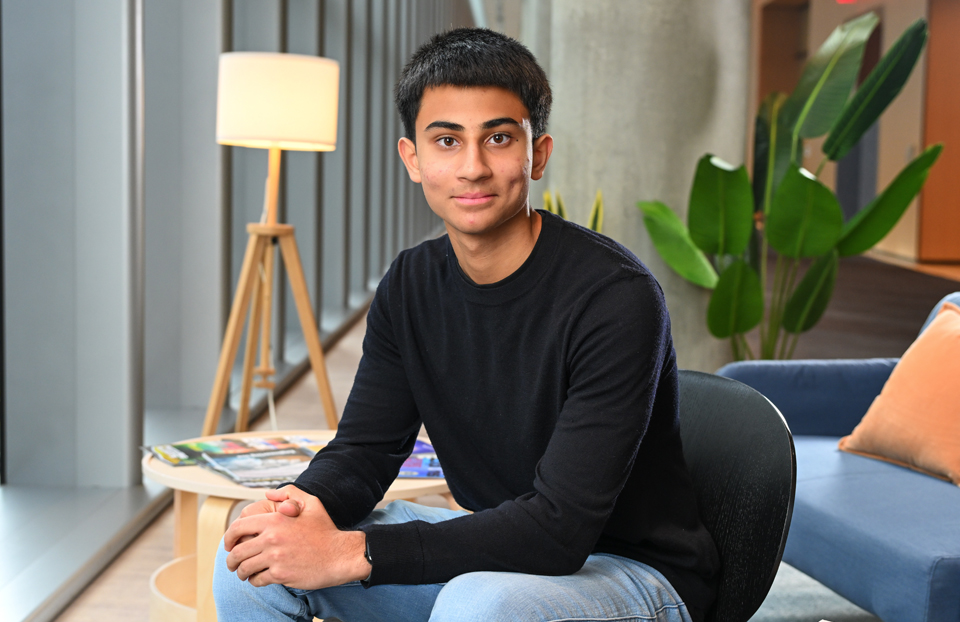
Beyond the Project
Vishwum co-founded and co-directs IntersectSTEM, a nonprofit that mentors refugee and international students. His goal is to improve diversity in STEM fields through hands-on workshops.
FUN FACTS: Vishwum co-leads his school’s Spanish honors society, which won Chapter of the Year in 2024. He helped organize dozens of events, including volunteer work, fundraising and cultural immersion.
